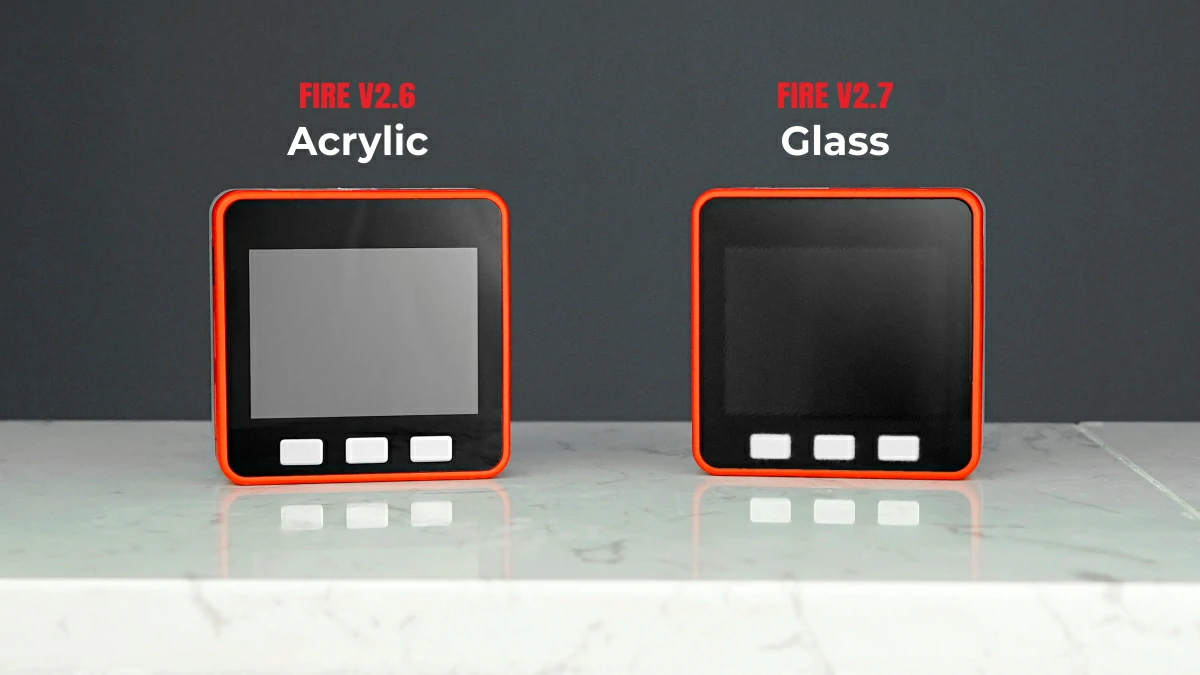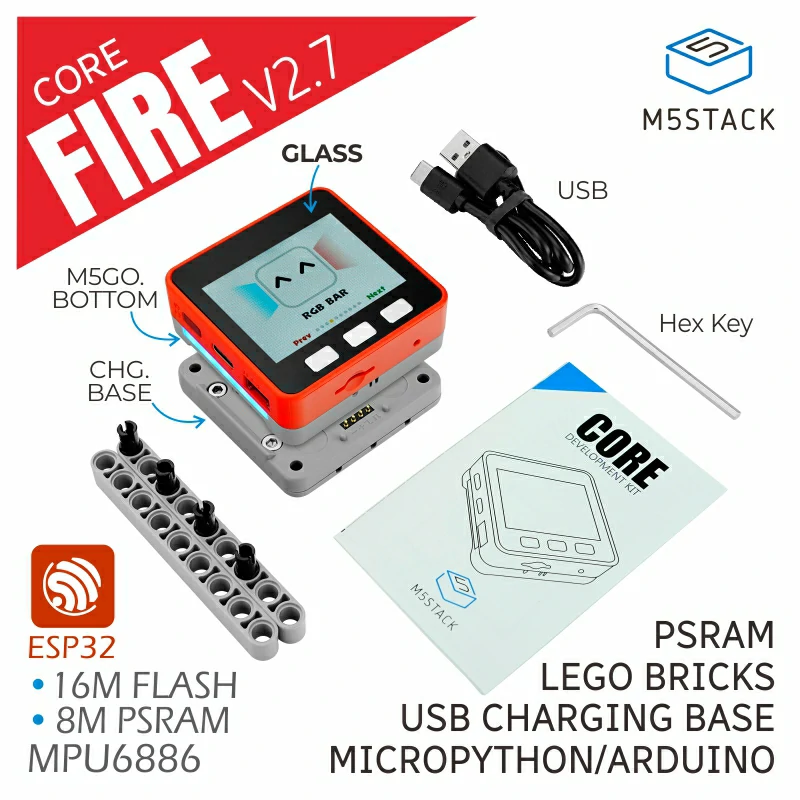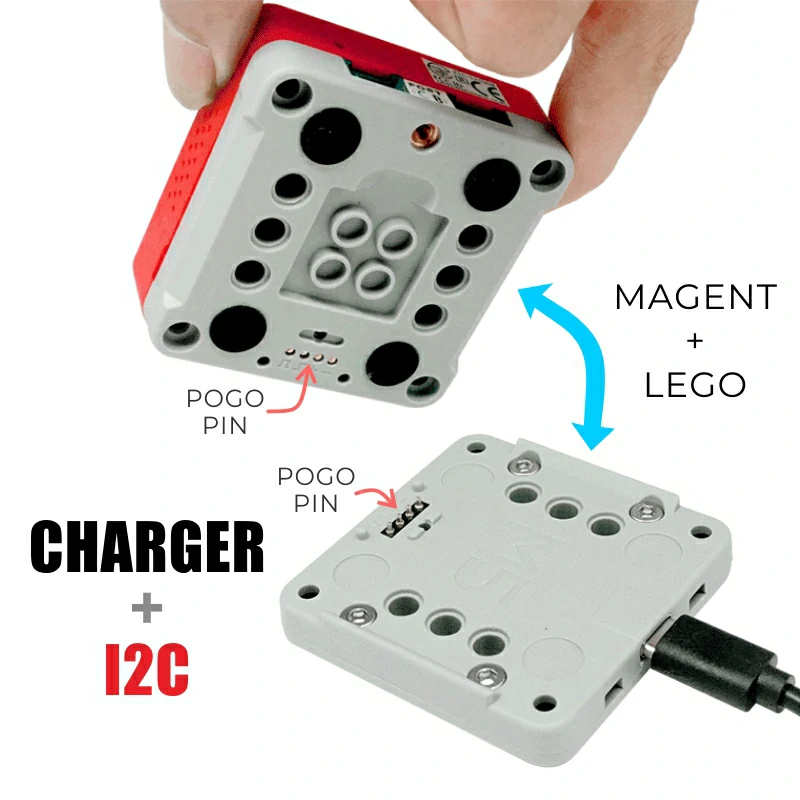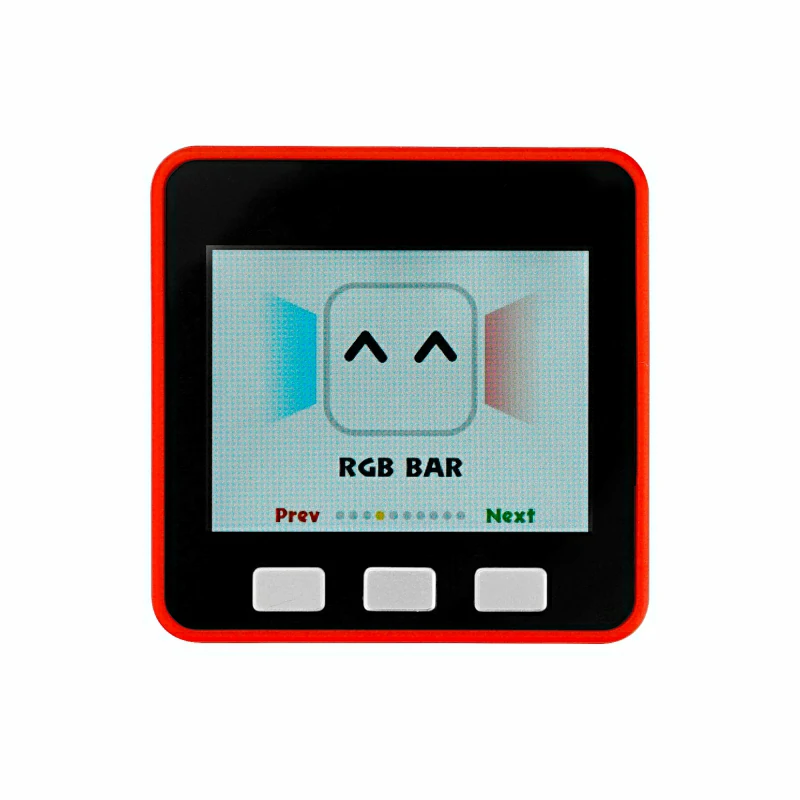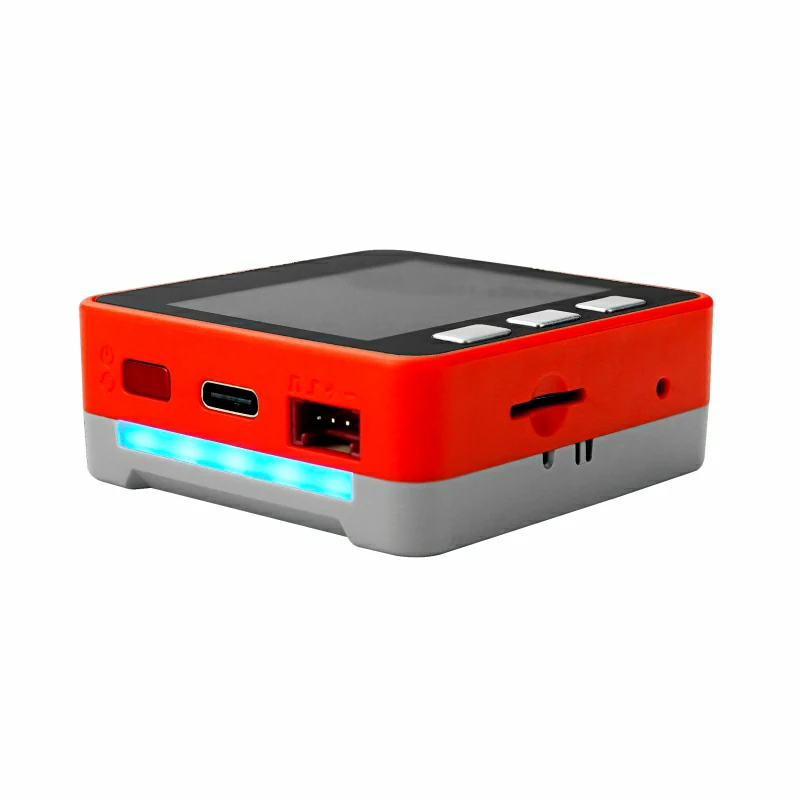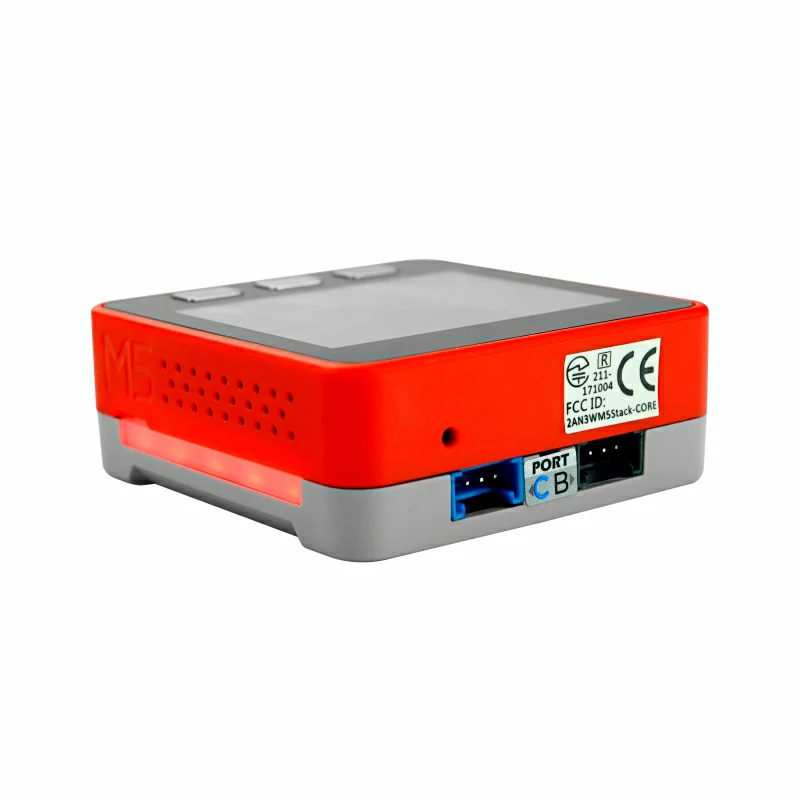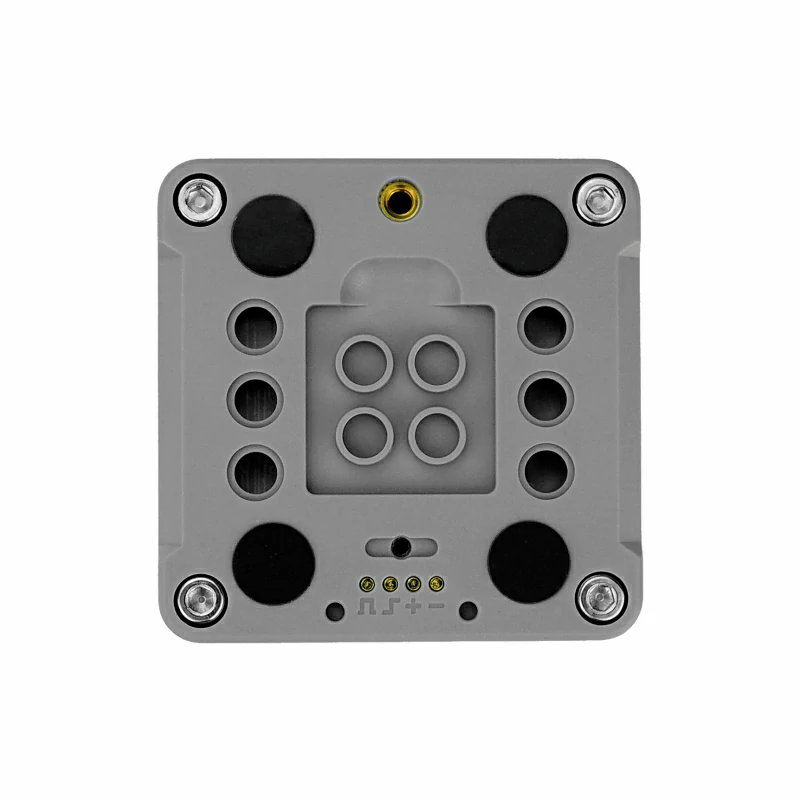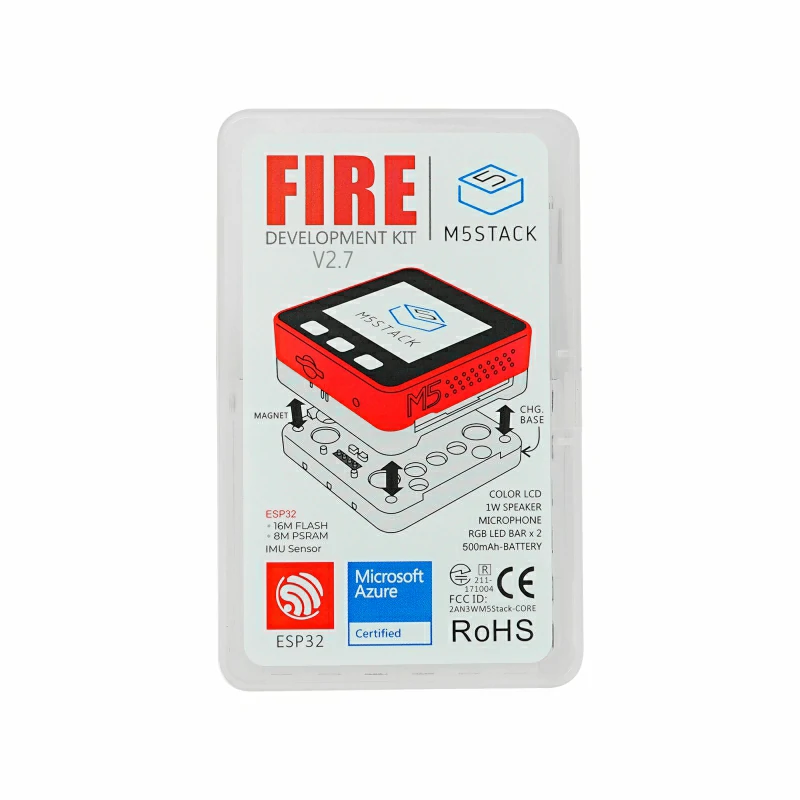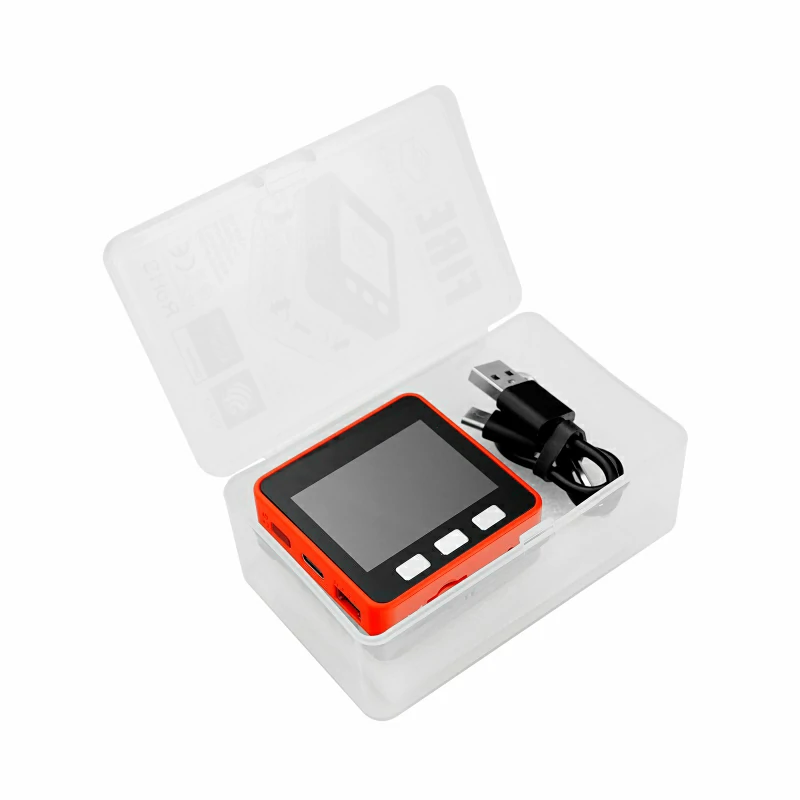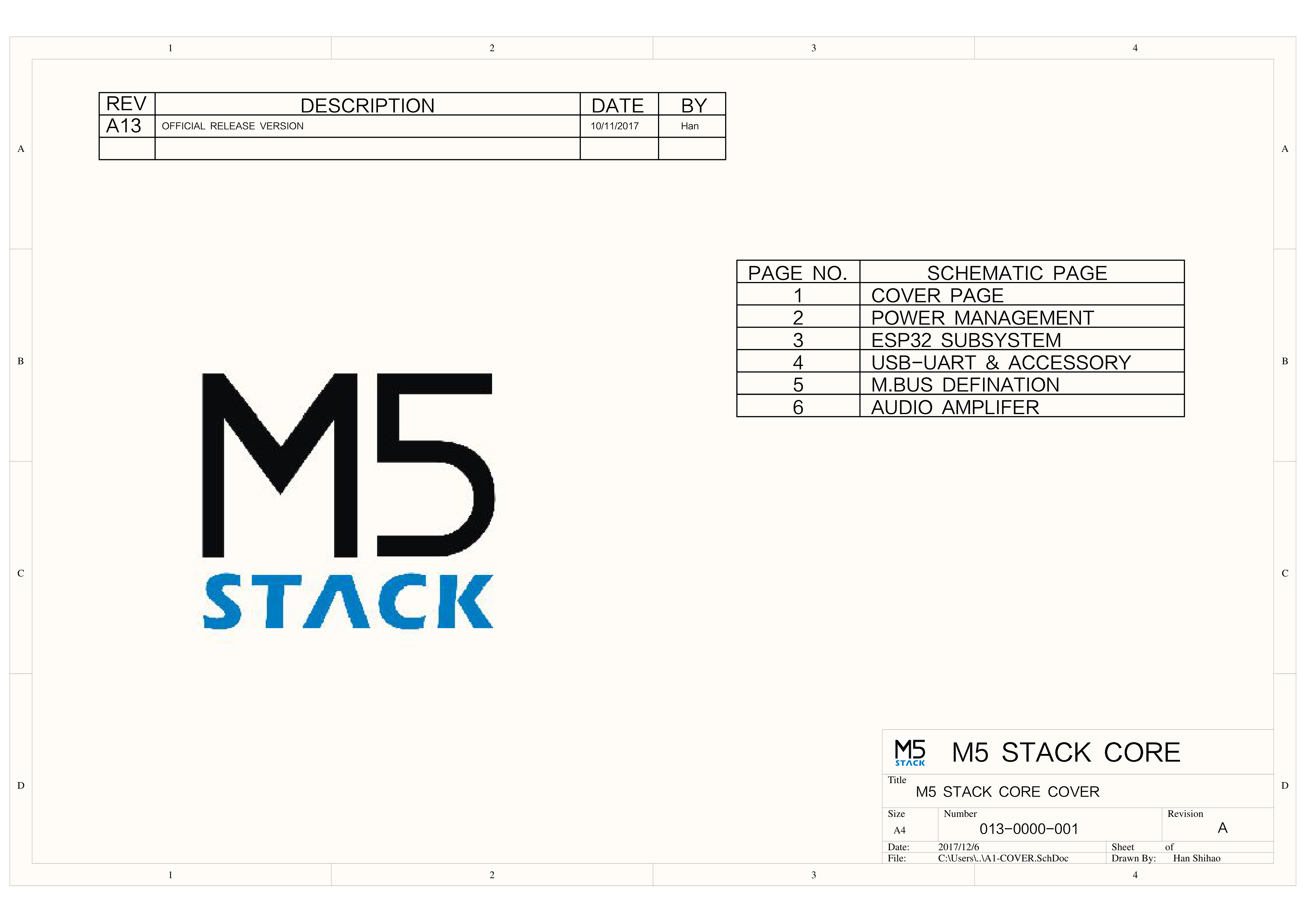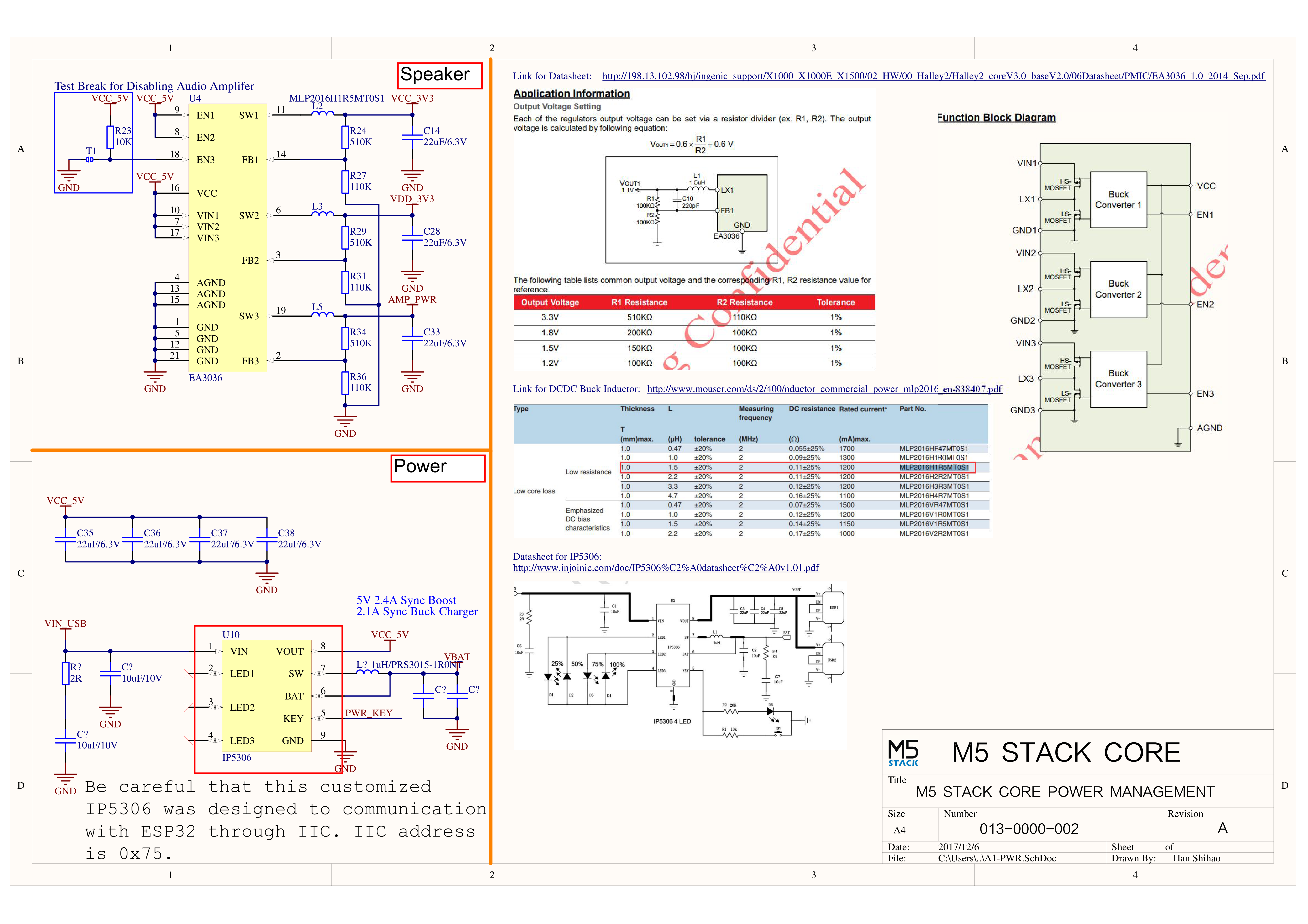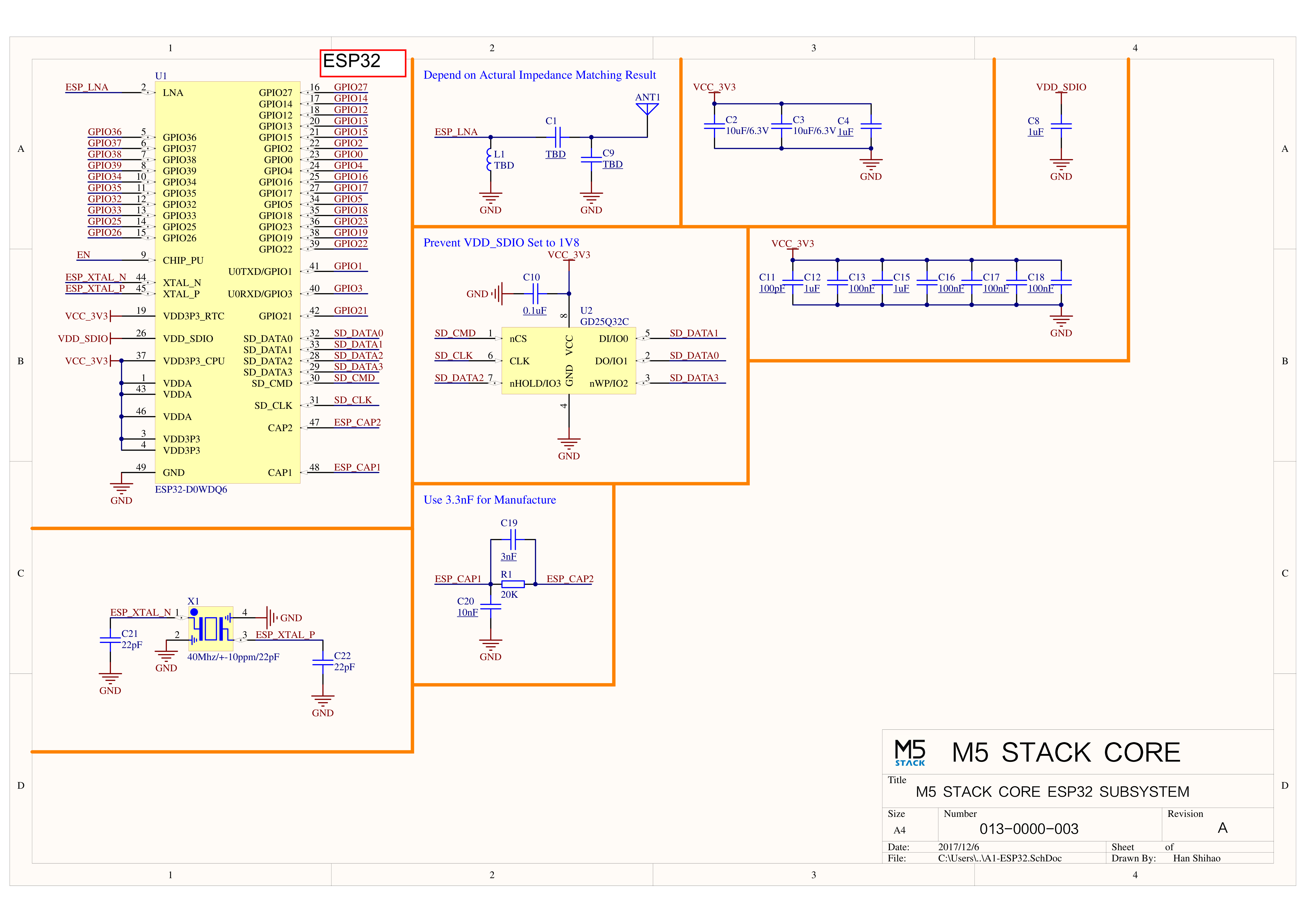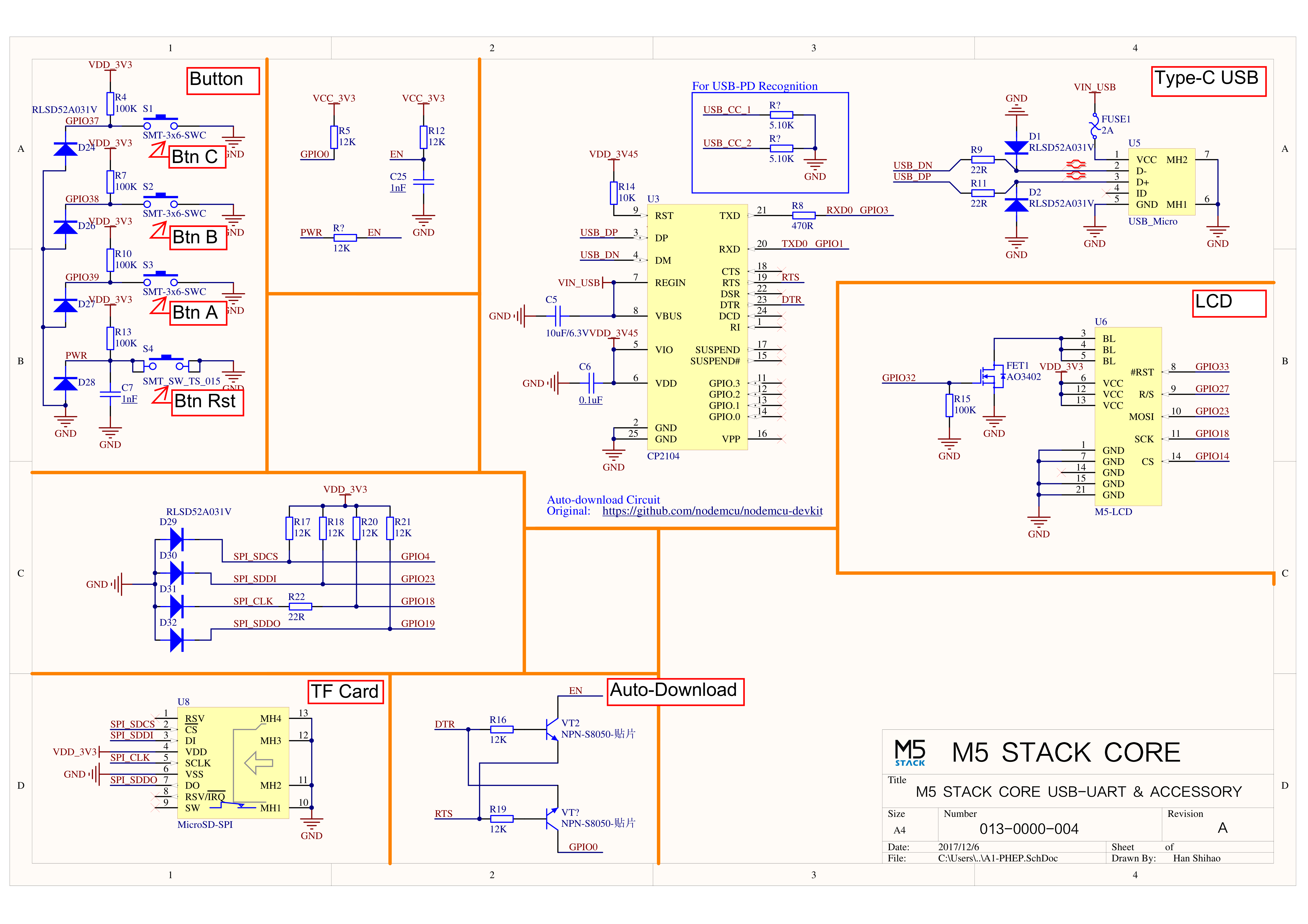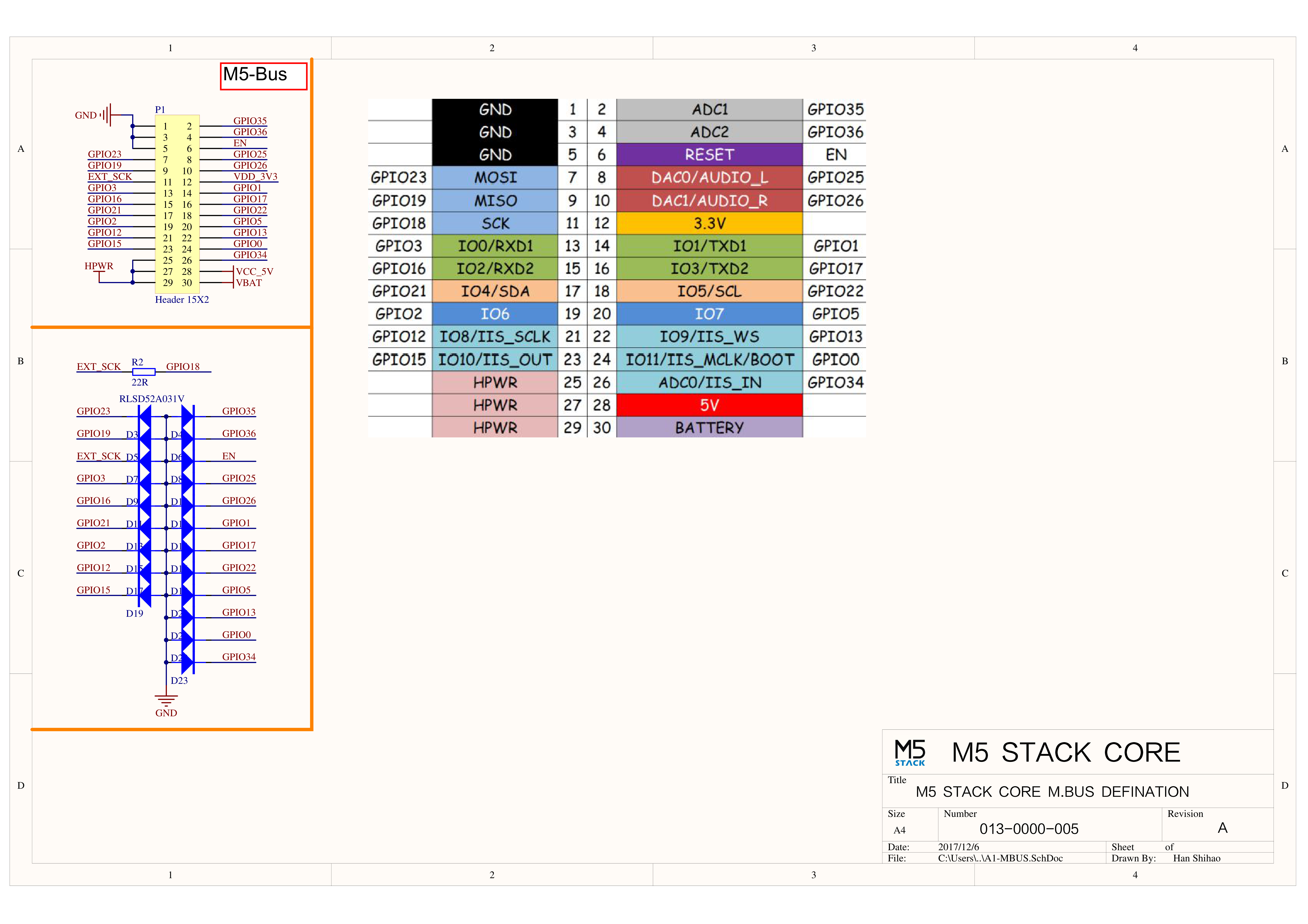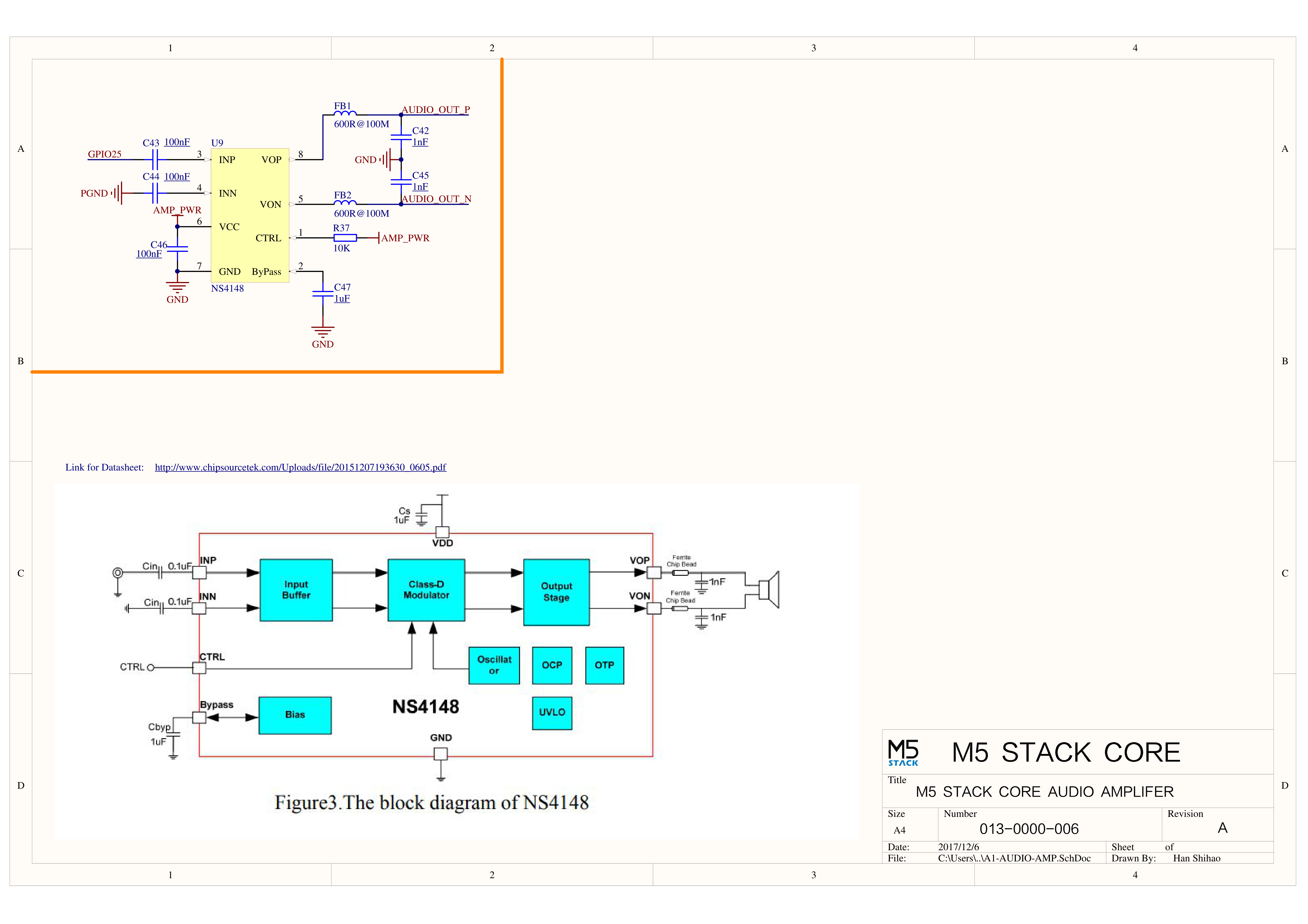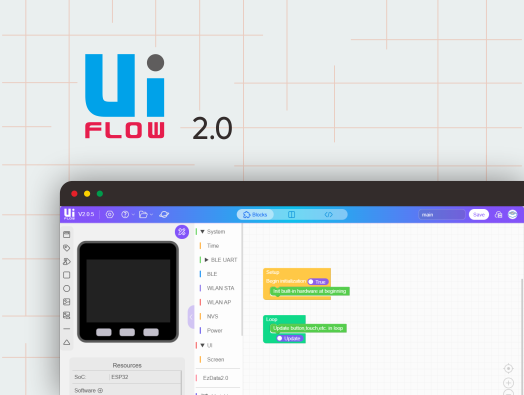Fire v2.7
SKU:K007-V27
Description
Fire v2.7 is a cost-effective Wi-Fi IoT controller. It uses the Espressif ESP32 main control chip, equipped with 2 low-power Xtensa® 32-bit LX6 microprocessors, with a main frequency of up to 240 MHz. It has an onboard memory combination of 8M PSRAM + 16M Flash, integrating a 2.0-inch full-color high-definition IPS display panel, IMU, LED, microphone, speaker, TFCard slot, and other peripherals. The fully covered casing ensures the stability of circuit operation even in complex industrial application scenarios. The internal bus provides a variety of commonly used interface resources (ADC/DAC/I2C/UART/SPI, etc.), making it highly expandable. This feature-rich, high-performance IoT controller is very suitable for various product prototype development, industrial control, and smart building application scenarios.
Features
Highly Productized:- Exquisite appearance design, directly corresponding to product landing for prototype development
- Product-grade full-cover casing for more stable circuit operation
- Low-Code Development:
- Supports UIFlow graphical programming platform, scripting, no compilation, cloud push
- Fully compatible with mainstream development platforms like Arduino, ESP-IDF
- Supports FreeRTOS, efficiently organizing task logic and optimizing program execution efficiency with dual-core and multitasking mechanisms
- High Integration:
- 2.0-inch IPS display panel, 6-axis IMU, programmable RGB lights x10, microphone, speaker, custom buttons x3
- Built-in lithium battery power supply, integrated power management chip, supports Type-C interface and POGO PIN interface power supply
- Professionally modulated RF circuit provides stable and reliable wireless communication quality
- Strong Expandability:
- GROVE expansion ports x3 (I2C, GPIO, UART)
- Easily integrate into M5Stack's software and hardware ecosystem, stackable module design, plug-and-play sensor expansion
Tutorial
This tutorial will teach you how to control the Fire device through the UIFlow graphical programming platform
This tutorial will teach you how to control the Fire device through the UiFlow2 graphical programming platform
This tutorial will teach you how to program and control the Fire device using the Arduino IDE
Features
- Developed based on ESP32
- 8M PSRAM + 16M FLASH memory combination
- Integrated full-color high-definition IPS display panel and various hardware peripherals
- Rich resource interfaces, compatible with M5Stack stackable module system and sensor system, highly expandable
- Uses M5GO BOTTOM base compatible with 8mm LEGO bricks, making structural building fun.
- Microsoft Azure certified device
- Development Platform
- UiFlow1
- UiFlow2
- Arduino IDE
- ESP-IDF
- PlatformIO
Includes
- 1 x M5Stack FIRE
- 1 x M5GO charging base
- 2 x LEGO bricks
- 5 x LEGO connectors
- 1 x M3 hex wrench
- 1 x USB Type-C cable (50cm)
- 1 x User manual
Applications
- IoT controller
- Maker DIY projects
- Smart home control
Specifications
| Specification | Parameter |
|---|
| SoC | ESP32-D0WDQ6@Dual-core processor, Main frequency 240MHz |
| DMIPS | 600 |
| SRAM | 520KB |
| Flash | 16MB |
| PSRAM | 8MB |
| Wi-Fi | 2.4 GHz Wi-Fi |
| Power Input | 5V@500mA |
| Interface | USB Type-C x1, POGO PIN x1, I2C x1, GPIO x1, UART x1 |
| Buttons | Physical buttons x 3 |
| LCD Screen | 2.0"@320 x 240 ILI9342C IPS panel, max brightness 853nit |
| Speaker | 1W-0928 |
| Microphone | Analog BSE3729 Microphone |
| IMU | 6-axis MPU6886 |
| USB Chip | CH9102F |
| LED | SK6812 RGB LED x 10 |
| Antenna | 2.4G 3D antenna |
| Battery | 500 mAh @ 3.7V |
| Casing Material | Plastic (PC) |
| Product Size | 54.0 x 54.0 x 28.6mm |
| Product Weight | 88.8g |
| Package Size | 106.7 x 69.1 x 40.4mm |
| Gross Weight | 148.6g |
Learn
Power On/Off
Power On/Off Operation
Power On: Single click the red power button on the left
Power Off: Quickly double-click the red power button on the left
USB Power Supply: By default, when USB is powered, it cannot be turned off
Note:
GPIO 16 / 17 in FIRE is connected to PSRAM by default, so when connecting or stacking other functional modules, be careful to avoid conflicts with these two pins to prevent the device from malfunctioning and causing instability.
Schematics
PinMap
LCD Screen & TF Card
LCD Pixels: 320x240
TF Card supports up to 16GB
| ESP32-D0WDQ6 | GPIO23 | GPIO19 | GPIO18 | GPIO14 | GPIO27 | GPIO33 | GPIO32 | GPIO4 |
|---|
| ILI9342C | MOSI/MISO | / | CLK | CS | DC | RST | BL | |
| TF Card | MOSI | MISO | CLK | / | / | / | / | CS |
| ESP32-D0WDQ6 | GPIO39 | GPIO38 | GPIO37 | GPIO25 |
|---|
| Button Pins | BUTTON A | BUTTON B | BUTTON C | |
| Speaker | / | / | / | Speaker Pin |
GROVE Interface A & IP5306
The power management chip (IP5306) is a custom I2C version, and its I2C address is 0x75. Click here to view the IP5306 register manual.
| ESP32-D0WDQ6 | GPIO22 | GPIO21 | 5V | GND |
|---|
| GROVE A | SCL | SDA | 5V | GND |
| IP5306 (0x75) | SCL | SDA | 5V | GND |
IP5306 Charge/Discharge, Voltage Parameters
| Charging | Discharging |
|---|
| 0.00 ~ 3.40V -> 0% | 4.20 ~ 4.07V -> 100% |
| 3.40 ~ 3.61V -> 25% | 4.07 ~ 3.81V -> 75% |
| 3.61 ~ 3.88V -> 50% | 3.81 ~ 3.55V -> 50% |
| 3.88 ~ 4.12V -> 75% | 3.55 ~ 3.33V -> 25% |
| 4.12 ~ / -> 100% | 3.33 ~ 0.00V -> 0% |
MPU6886
MPU6886 I2C address 0x68
| ESP32-D0WDQ6 | GPIO22 | GPIO21 | 5V | GND |
|---|
| MPU6886 (0x68) | SCL | SDA | 5V | GND |
M5GO Base PinMap
LED Strip & Microphone & Speaker
| ESP32-D0WDQ6 | GPIO15 | GPIO34 | GPIO25 |
|---|
| Hardware | LED Pin | Mic Pin | Speaker Pin |
ESP32 ADC/DAC
| ADC1 | ADC2 | DAC1 | DAC2 |
|---|
| 8 Channels | 10 Channels | 2 Channels | 2 Channels |
| G32-39 | G0/2/4/12-15/25-27 | G25 | G26 |
HY2.0-4P
| HY2.0-4P | Black | Red | Yellow | White |
|---|
| PORT.A | GND | 5V | G21 | G22 |
| PORT.B | GND | 5V | G26 | G36 |
| PORT.C | GND | 5V | G16 | G17 |
M5-Bus
| FUNC | PIN | LEFT | RIGHT | PIN | FUNC |
|---|
| GND | 1 | 2 | G35 | ADC |
| GND | 3 | 4 | G36 | ADC |
| GND | 5 | 6 | RST | EN |
| MOSI | G23 | 7 | 8 | G25 | DAC/SPK |
| MISO | G19 | 9 | 10 | G26 | DAC |
| SCK | G18 | 11 | 12 | 3V3 | |
| RXD0 | G3 | 13 | 14 | G1 | TXD0 |
| RXD2 | G16 | 15 | 16 | G17 | TXD2 |
| Int SDA | G21 | 17 | 18 | G22 | Int SCL |
| GPIO | G2 | 19 | 20 | G5 | GPIO |
| I2S_SK | G12 | 21 | 22 | G13 | I2S_WS |
| I2S_OUT | G15 | 23 | 24 | G0 | I2S_MK |
| HPWR | 25 | 26 | G34 | I2S_IN |
| HPWR | 27 | 28 | 5V | |
| HPWR | 29 | 30 | BAT | |
When using the RGB LED on GPIO15, it is recommended to initialize the pin with pinMode(15, OUTPUT_OPEN_DRAIN);
For more information on pin allocation and pin remapping, please refer to the ESP32 datasheet
Model Size

Datasheets
Softwares
Arduino
UiFlow1
UiFlow2
USB Driver
Click the link below to download the driver for your operating system. There are currently two driver chip versions, CP210X (for CP2104 version) / CP34X (for CH9102 version) driver package. After extracting the package, select the installation package corresponding to your operating system bit for installation. (If you are unsure of the USB chip used by your device, you can install both drivers. CH9102_VCP_SER_MacOS v1.7 may report an error during installation, but it has actually been installed, just ignore it.) If you encounter issues downloading programs (timeout or Failed to write to target RAM), try reinstalling the device driver.
| Driver Name | Applicable Driver Chip | Download Link |
|---|
| CP210x_VCP_Windows | CP2104 | Download |
| CP210x_VCP_MacOS | CP2104 | Download |
| CP210x_VCP_Linux | CP2104 | Download |
| CH9102_VCP_SER_Windows | CH9102 | Download |
| CH9102_VCP_SER_MacOS v1.7 | CH9102 | Download |
MacOS Port Selection
In MacOS, there may be two selectable ports, please choose the port named wchmodem when using.
Easyloader
| Easyloader | Download Link | Note |
|---|
| Fire v2.7 Factory Firmware Easyloader | download | / |
Video
Product Comparison
To compare information on the controller series products, you can visit the Product Selection Table, check the target products, and get the comparison results. The selection table covers key information such as core parameters and functional features, and supports comparison of multiple products simultaneously.
Version Change
| Release Date | Product Changes | Remarks |
|---|
| 2018.6 | Initial release | / |
| 2019.7 | MPU9250 changed to SH200Q+BMM150, TN screen changed to IPS screen | Please upgrade your M5Stack library to the latest version (v0.2.8 or above) to fix screen inversion issue |
| 2019.8 | SH200Q changed to MPU6886 | / |
| 2019.11 | Battery capacity changed from 600mAh to 500mAh | / |
| 2020.4 | PSRAM size changed from 4MB to 8MB | / |
| 2021.8 | Upgraded to v2.6: Removed BMM150 magnetometer, CP2104 changed to CH9102, structural details optimized | / |
| 2023.4 | Upgraded to v2.7 | Screen changed to glass screen for clearer display, Grove port added boost function for stable 5.1v output, more stable under load |
Note: Devices with 2018.2A PCB version do not support C2C (Type-C to Type-C) connection and PD power supply.
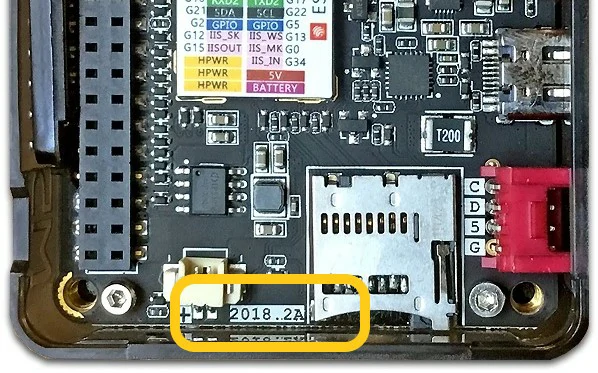
New vs Old Version Comparison
